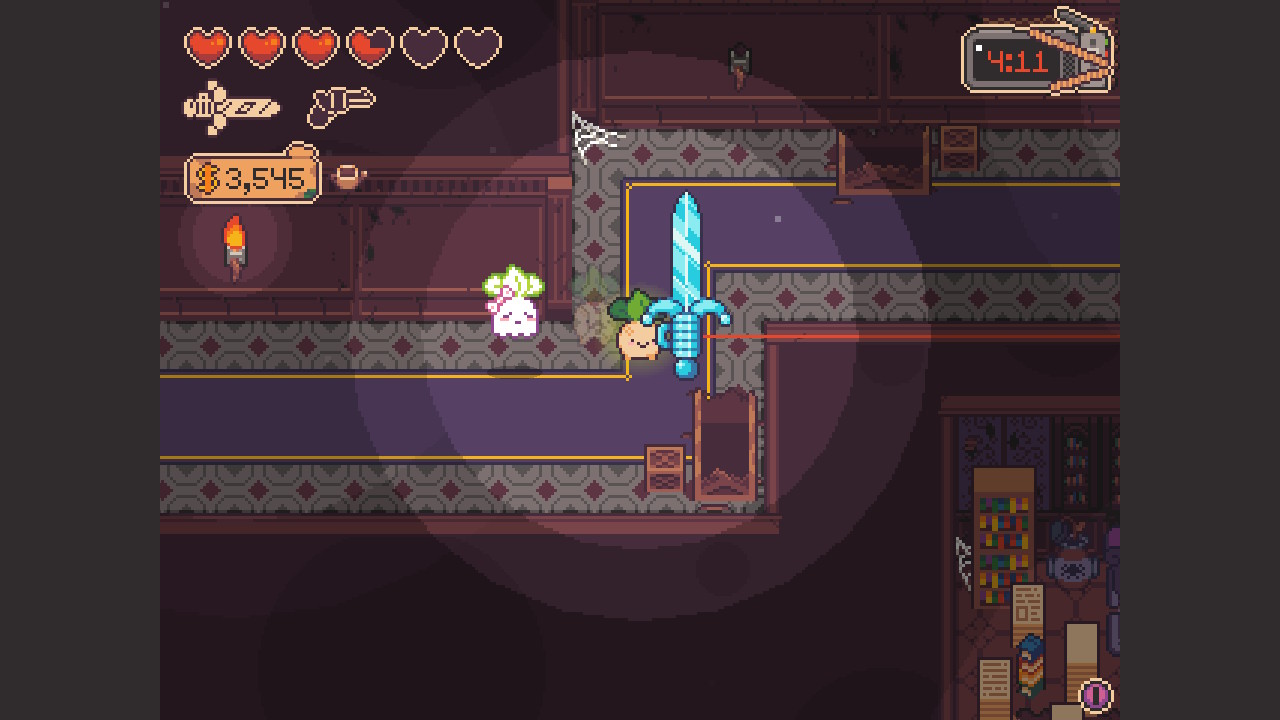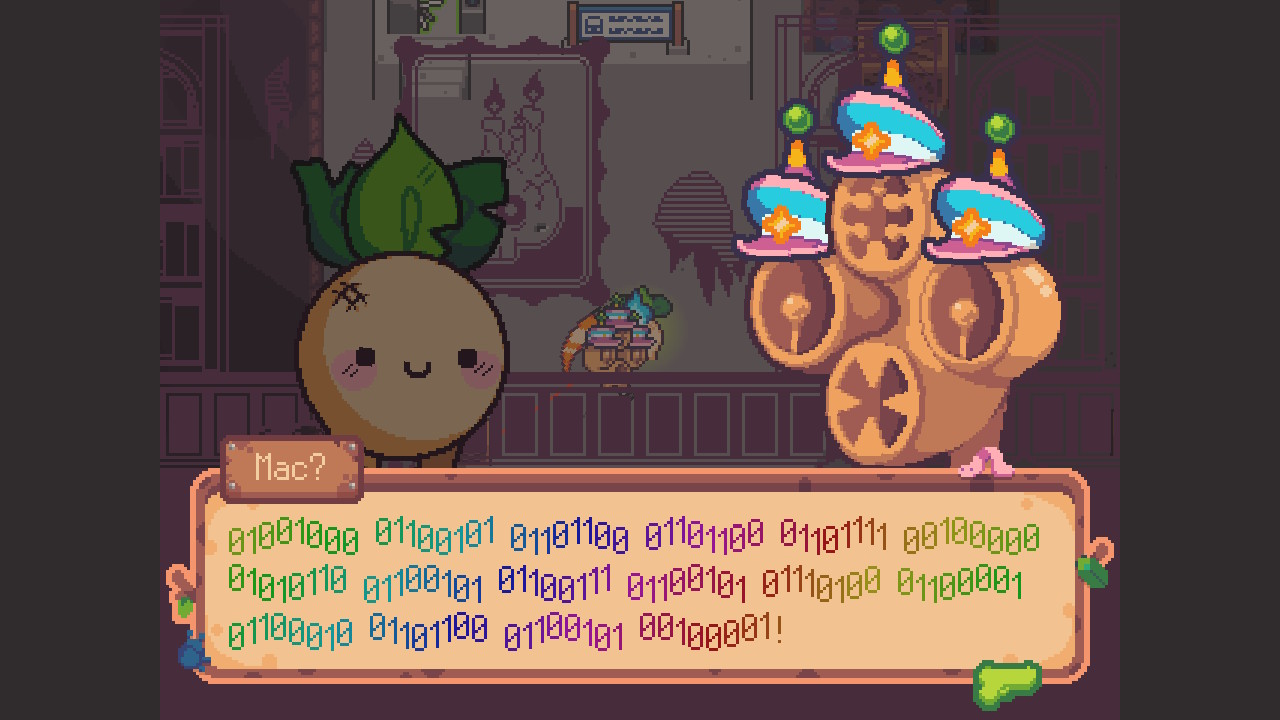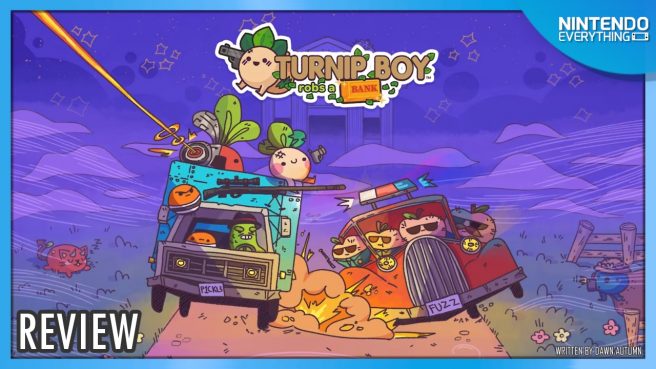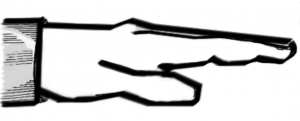[Review] Turnip Boy Robs a Bank
System: Switch
Release date: January 18, 2024
Developer: Snoozy Kazoo
Publisher: Graffiti Games
It’s not very often that you find a game that will actively encourage you to commit crimes, with most that even give you the option of doing so attaching a suitable punishment: placing a bounty on your head so that authorities will attack you on site, changing your name to “THIEF” so that everyone knows your true nature, or even outright killing you if you return to the scene of the crime in future. Turnip Boy Robs a Bank sees the titular hero returning to commit further crimes after his successful tax evasion, this time in the form of a roguelite experience that, despite its flaws, is as delightfully charming and nonsensical as its predecessor.
Turnip Boy Robs a Bank loosely picks up where Turnip Boy Commits Tax Evasion left off, and sees Turnip joining the Pickled Gang to undertake a heist on the Botanical Bank, which came into existence in the aftermath of a civil war directly caused by Turnip’s shenanigans in the previous game. For returning fans of that game, there is a loose narrative here to follow, but the connection to the previous game is primarily in the recurring NPCs, and the story feels more like a contrived excuse to dive back into the bank something to pay attention to: this, of course, is the whole point, and the dialogue is witty, humorous, and often makes absolutely no sense at all.
Unlike its action adventure predecessor, Turnip Boy Robs a Bank is roguelite. You’ll spend your time diving into the titular bank, a large and fairly linear dungeon filled with treasures, enemies, and friendly NPCs. The bank is divided into ten smaller areas, and many of these will be inaccessible from the beginning: in order to go deeper into the bank you’ll need keycards, which can be acquired by defeating a boss. In the corner of the screen you’ll see a timer, and once this runs out you’ll be more aggressively pursued by the bank security, who will rappel down from the ceiling en masse until you either leave the bank or die. You can avoid them and continue to explore if you wish, but after a little while longer the owner of the bank, Stinky, will flood the place with poison gas to force the issue.
Although the bank itself is not randomized, you can take elevators at various points into randomized rooms that contain specific NPCs or treasures, which can help to break up the monotony of exploring the same place over and over. You will almost certainly need to make this the focus of your run however, as the timer can only be extended up to six minutes, and although the bank is quite small, this short length of time doesn’t really allow you to explore. For better or worse Turnip Boy Robs a Bank was clearly designed to be played in short bursts and although this can be frustrating at times, it is mostly supported by the structure of the bank, with key cards letting you travel between areas more readily once you’ve opened the way the first time. The unchanging nature of the bank allows you to learn the layout over time and optimize your time, which is a change of pace from roguelites that opt to randomize levels and focus more on exploration.

As you progress you’ll acquire money from enemies, treasures you can find, and NPCs that you can quite literally shake down. Money can be spent back at your hideout on upgrades to things such as health, weapon damage, and the amount of time you can spend without being harassed by security in the bank. Surprisingly, I found that the cost of these upgrades wasn’t quite as steep as they appeared to be at first glance. Although you won’t be able to carry much cash, the treasures you’ll find along the way are infinitely more valuable, and it’s easy to rack up tens of thousands in a single run this way. Compared to similar roguelike titles, the pacing of Turnip Boy feels mercifully more balanced in this regard, allowing you to increase your survivability at a steadier rate and making each run into the bank more meaningful.
Combat in the game plays out like a twin-stick shooter, and controls are fluid and responsive, allowing for some fast-paced and satisfying (if occasionally bizarre) encounters to punctuate exploration. You’re given a wide variety of different physical and projectile weapons, from your standard guns and swords to magic wands and boomerangs. Each has their own cooldown period and range, and although rarer weapons are more powerful, I found that the starting weapons I could choose between were typically enough to carry me through most encounters. Unfortunately you cannot start with weapons dropped by enemies, which feels like a needless restriction, although you can store them in a weapons locker for later use, and as long as you don’t die or swap them out, you can take them back to your base and pick up where you left off with them equipped. Weapons dropped by enemies can also be used to fund weapon research, which will unlock different starting weapons that will always be available, meaning that you won’t always have to start with the same handgun and sword each time.
As previously mentioned, you’ll also encounter a wide variety of NPCs as you explore the Botanical Bank, many of whom return from the previous game. Most have their own bizarre personal problems that they’ll ask you to help with, which consist mostly of fetch quests; finding another NPC to either take something from them (often by force) or deliver something being the most common requests. Although the dialogue often makes doing these worth the effort, I felt that it was a missed opportunity that the hats that were the actual reward didn’t have any purpose beyond being just a cosmetic change to your appearance: a small boost to one of your stats, for example, would have made the whole process more meaningful. There are a lot of these sidequests scattered throughout the bank, and despite the lack of a more satisfying reward, doing them felt like a natural part of progression. Most of the time I would stumble across an NPC in one area who wanted me to interact with another in an area that I was trying to get to for the next story-related objective. There are also a small number of long-term objectives you can accept, such as destroying furniture or killing a number of a type of enemy, although these are similarly unrewarding.

Although its charming presentation is a point in its favor, Turnip Boy Robs a Bank lacks a lot of the depth that you’d find in similar roguelite titles that give them an added longevity. There are a total of eight different upgrades (plus an official hat, of course) that can be purchased, and these can only be boosted a handful of times. Weapon Research is similarly limited, and only affects the weapons you can start with; their stats cannot be affected by further individual research or upgrades, and you cannot enhance weapons dropped by enemies. Outside of the large number of fetch quests offered by the game’s NPCs, there is very little to do once you’ve fully upgraded your stats and weapon research, which is likely to happen long before you finish the story assuming that you don’t adjust the settings. This can also make the end stretch of the game feel slightly unbalanced, as it lasts for significantly longer than your average run through the bank, and there is no way to get stronger to improve your odds of surviving once you have exhausted all of the options back at your base.
Unfortunately Turnip Boy is also let down quite significantly by its performance, with notable frame drops and slowdown when large numbers of enemies are on screen. Because this is a guaranteed occurrence when the timer runs down and enemies start dropping from the ceiling to more actively try and end your rampage through the bank, it means you’ll get up to six minutes of smooth gameplay at the most before the framerate makes the game practically unplayable, and this added problem also means that it’s very easy to die and lose most of what you’ve gathered. I also experienced similar issues when entering rooms with laser security active and although shutting down the security fixed the slowdown in these instances, it made navigating these rooms more difficult than it needed to be. A patch has been promised by the developers, but until this arrives and resolves these issues, it makes the game an often unpleasant, if not unplayable, experience on the Switch.

Turnip Boy offers a reasonable number of accessibility options, with Aim Laser and Auto Aim helping to make the twin-stick shooter controls more manageable for those that need it, and a Damage modifier and God Mode for those who find the roguelite mechanics unpalatable; I also found myself resorting to the latter on more than one occasion when the framerate made playing the game a struggle. There are also color options to outline enemies and interactable objects, which is a useful feature for the latter in particular: despite the crisp pixel visuals, it can be difficult to identify exactly what you can interact with for a reward when a lot of the environment objects are destructible.
Each of the bank’s areas boasts its own distinct visual aesthetic, and although the enemy variety is lacking this is offset by some particularly creative and memorable boss encounters. The game is often explosive and colorful and although at times it can be difficult to make out what is going on in some areas due to lighting or just how busy the screen is with details and weapon effects, the overall quality here is of an impressively high standard and perfectly complements the wacky charm of the game’s premise and dialogue.
The Verdict
Turnip Boy Robs a Bank is a charming, baffling, and often highly entertaining roguelike that is fun in short bursts and provides a satisfying experience, even if it is lacking in depth at times. At time of writing it’s not an easy recommendation to make due to the performance issues that render it practically unplayable as soon as the timer hits zero and you’re faced with more than a couple of enemies at a time, but assuming these are fixed in the future, fans of the original title or those looking for a simpler roguelike experience will find a game worth their time here.
Turnip Boy Robs a Bank copy provided by the publisher for the purposes of this review.

